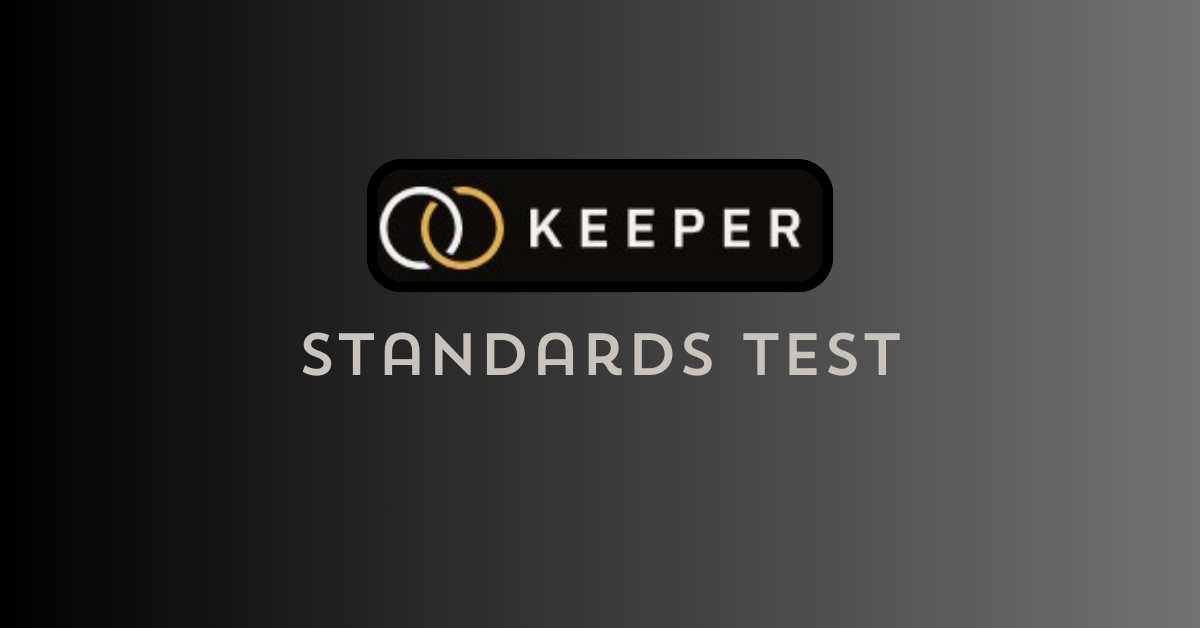In the modern dating landscape, finding a partner who meets your expectations can be both exciting and challenging. With so many variables to consider—age, income, height, interests, and more—it’s easy to feel overwhelmed. This is where the Keeper Standards Test comes in, offering individuals a way to gauge how realistic their romantic expectations are. But what exactly is the Keeper Standards Test, and how can it help you in your quest for love? In this article, we’ll explore the concept behind the test, its methodology, and how it can guide you toward a more fulfilling relationship.
What is the Keeper Standards Test?
The Keeper Standards Test is a tool designed to help people evaluate whether their expectations in a partner align with reality. By inputting specific preferences—such as age, height, income, and other criteria—the test calculates the likelihood of finding someone who meets those standards. The goal is to provide users with a realistic perspective on their dating pool, based on available demographic data.
The Purpose Behind the Keeper Standards Test
In a world where dating apps and online platforms have expanded the pool of potential partners, the Keeper Standards Test aims to help individuals set realistic expectations. It’s easy to have an idealized vision of the perfect partner, but reality often requires compromise. The test helps users understand how their preferences stack up against the actual population and whether adjustments might be necessary to increase their chances of finding a compatible match.
How the Keeper Standards Test Works
Inputting Your Preferences
To use the Keeper Standards Test, you begin by entering various preferences that are important to you as a potential partner. These preferences typically include:
- Age: The age range you’re interested in.
- Height: Your preferred height for a partner.
- Income: The minimum income level you find acceptable.
- Ethnicity: Any specific ethnic backgrounds you prefer.
- Religion: Religious preferences or requirements.
Understanding the Data
The Keeper Standards Test uses data from reputable sources, such as the U.S. Census Bureau and the Centers for Disease Control and Prevention (CDC), to analyze how common your preferences are within the general population. This data-driven approach provides a realistic estimate of the percentage of the population that fits your criteria.
Calculating the Results
Once your preferences are entered, the Keeper Standards Test calculates the probability of finding someone who matches all of your criteria. The result is typically presented as a percentage, indicating how much of the population meets your standards. For example, if your preferences align with only 5% of the population, the test will show that your chances of finding such a partner are relatively low.
The Science Behind the Keeper Standards Test
Demographic Data Analysis
The Keeper Standards Test relies heavily on demographic data to provide accurate results. The U.S. Census Bureau, for instance, collects comprehensive data on age, income, ethnicity, and other key factors. By cross-referencing your preferences with this data, the test can provide a clear picture of how many people in the population meet your criteria.
Statistical Modeling
To arrive at a precise probability, the Keeper Standards Test uses statistical modeling techniques. These models take into account the distribution of various traits within the population and how they intersect. For example, the test might calculate how common it is for someone of a specific age range to also meet your income requirements, height preferences, and other criteria simultaneously.
Limitations of the Test
While the Keeper Standards Test provides valuable insights, it’s important to understand its limitations. The test is based on broad demographic data and may not account for all the nuances of individual human behavior. Additionally, it focuses on quantifiable traits, such as age and income, rather than subjective qualities like personality or emotional compatibility, which are equally important in a relationship.
The Psychology of Dating Expectations
Why Do We Have Expectations?
Expectations in dating often stem from cultural, social, and personal influences. Society frequently sets standards for what constitutes an “ideal” partner, which can shape our own expectations. Personal experiences, such as past relationships or family dynamics, also play a significant role in forming these expectations.
The Impact of Unrealistic Standards
Unrealistic expectations can hinder your ability to find a compatible partner. When your standards are set too high, you might overlook potential matches who don’t meet every single criterion but could be a great fit in other ways. The Keeper Standards Test helps users recognize when their expectations may be out of sync with reality, encouraging a more open-minded approach to dating.
Adjusting Expectations for Better Outcomes
Understanding that no one is perfect, and that compromise is a natural part of any relationship, can lead to more successful dating experiences. The Keeper Standards Test serves as a reality check, prompting users to reassess their non-negotiables and consider which traits are truly essential for a happy, lasting relationship.
How to Use the Keeper Standards Test Effectively
Setting Realistic Preferences
When using the Keeper Standards Test, it’s crucial to set preferences that are realistic and reflective of what you truly need in a partner. For instance, while financial stability might be important, setting an unreasonably high income requirement could drastically reduce your dating pool. Instead, focus on a range that aligns with your lifestyle and long-term goals.
Analyzing Your Results
After taking the test, carefully analyze the results. If the percentage of people who meet your criteria is low, consider whether any of your preferences can be adjusted. For example, expanding your age range or being more flexible about height or income could increase your chances of finding a compatible partner.
Using the Test as a Guide, Not a Rule
The Keeper Standards Test is a tool designed to provide insights, not definitive answers. Use it as a guide to help you understand the landscape of your dating pool, but don’t let it dictate your choices entirely. Remember that relationships are complex, and factors beyond demographics—such as chemistry, shared values, and mutual respect—are equally important.
Common Misconceptions About the Keeper Standards Test
It Guarantees a Perfect Match
One of the most common misconceptions about the Keeper Standards Test is that it can guarantee finding a perfect match. In reality, the test only provides a statistical likelihood of finding someone who meets your criteria. Finding a compatible partner involves many factors, including effort, timing, and emotional connection.
It Replaces the Need for Personal Interaction
Some users might mistakenly believe that the Keeper Standards Test can replace the need for personal interaction and dating experiences. While the test can help narrow down your search, it cannot replace the importance of meeting people, engaging in conversations, and building relationships through shared experiences.
It Predicts Relationship Success
Another misconception is that the test can predict the success of a relationship. While finding someone who meets your standards is a positive first step, the long-term success of a relationship depends on communication, compatibility, shared values, and mutual effort. The Keeper Standards Test does not account for these subjective factors.
The Role of Data in Modern Dating
How Data Influences Dating Platforms
In today’s digital age, data plays a significant role in shaping the way we approach dating. Many dating platforms use algorithms that analyze user data to suggest potential matches. These algorithms often consider factors like location, interests, and previous dating behavior to make recommendations.
The Benefits of Data-Driven Dating
Data-driven dating has several benefits, including increased efficiency in finding compatible matches and a more personalized dating experience. By using data to inform decisions, individuals can focus their efforts on people who are more likely to meet their criteria, potentially leading to more successful outcomes.
The Limitations of Data in Dating
However, relying too heavily on data can also have drawbacks. Algorithms can sometimes overlook the importance of human intuition and the unquantifiable aspects of attraction. Additionally, data-driven methods might lead users to become overly selective, filtering out potential matches based on criteria that may not be essential for a fulfilling relationship.
Also Read: Understanding SSIS-950: A Comprehensive Guide
The Keeper Standards Test vs. Other Dating Tools
Comparison with Dating Apps
Dating apps often use swiping mechanisms and matching algorithms to connect users, whereas the Keeper Standards Test focuses on assessing the feasibility of your expectations. While dating apps are more about discovering potential matches, the Keeper Standards Test is about introspection and understanding the reality of your dating preferences.
The Standards Calculator
Another tool commonly compared to the Keeper Standards Test is the Standards Calculator. While both tools aim to clarify romantic expectations, the Standards Calculator focuses more on specific, measurable attributes. In contrast, the Keeper Standards Test takes a broader approach by evaluating the overall likelihood of finding someone who meets a particular set of criteria.
The Role of Personality Tests
Personality tests, such as the Myers-Briggs Type Indicator (MBTI) or the Enneagram, assess compatibility based on personality traits rather than demographic data. These tests can complement it by helping users understand how their personalities might interact with those of potential partners, adding another layer of insight to the dating process.
Real-Life Applications of the Keeper Standards Test
Success Stories
Many users of the Keeper Standards Test have found that it helps them clarify their expectations and approach dating with a more realistic mindset. Success stories often involve individuals who adjusted their preferences after taking the test, leading to more fulfilling and successful relationships.
Adjusting Dating Strategies
For those who find that their expectations are too high, the Keeper Standards Test can be a catalyst for change. By adjusting their dating strategies—such as broadening their search criteria or being more open-minded—many users have reported improved dating experiences and better outcomes.
Insights for Long-Term Relationships
The Keeper Standards Test isn’t just for those who are dating; it can also provide valuable insights for individuals in long-term relationships. By reflecting on the traits that are most important to them, partners can better understand each other’s needs and work together to strengthen their relationship.
The Future of Dating and the Role of Standards Tests
The Evolution of Dating Tools
As technology continues to evolve, dating tools like the it will likely become even more sophisticated. Future iterations might incorporate more advanced data analytics, AI, and machine learning to provide even more accurate and personalized insights.
Ethical Considerations
As with any data-driven tool, there are ethical considerations to keep in mind. Ensuring user privacy, avoiding biases in algorithms, and providing users with transparent information about how their data is used will be crucial as these tools continue to develop.
The Importance of Human Connection
Despite the rise of data-driven dating tools, the importance of human connection cannot be overstated. While tools like the Keeper Standards Test offer valuable insights, they should be used as a supplement to, not a replacement for, the emotional and relational aspects of dating.
Conclusion: Embracing Reality and Finding Love
The Keeper Standards Test is a powerful tool for anyone navigating the complex world of modern dating. By providing a realistic assessment of your romantic expectations, it helps you understand how your preferences align with the available dating pool. However, it’s important to remember that while data can guide you, the success of any relationship ultimately depends on communication, compatibility, and mutual effort.
By using it as a guide and being open to adjusting your expectations, you can approach dating with greater clarity and confidence. Whether you’re just starting your search for a partner or looking to strengthen an existing relationship, understanding the balance between expectations and reality is key to finding lasting love.









